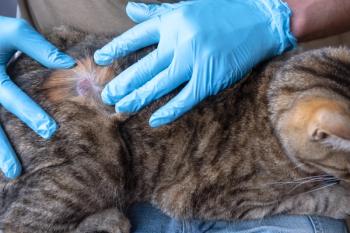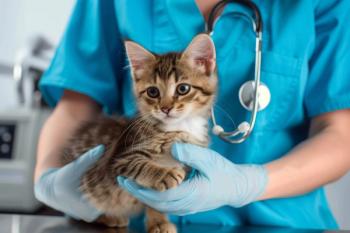
DVMs: Business remains "healthy"
Cleveland - Rising costs, tighter profit margins and price-shopping clients are all key issues for veterinarians in this economy.
CLEVELAND — Rising costs, tighter profit margins and price-shopping clients are all key issues for veterinarians in this economy.
Despite the reported management headaches, DVMs still believe the profession's overall health is quite good.
"We have held fairly steady in our client numbers the past few years," says Dr. Christine Teets, owner of All Cats-n-Dogs Hospital, Rapid City, S.D. "In our community of less than 75,000 people, we have added five new veterinary practices in the past two years. These new options for veterinary services have led to some shuffling of the available clients and have increased our calls from the price shoppers."
Like many veterinary practitioners reporting on DVM's exclusive State of the Profession Survey (related story), average client transactions during the past three years have been on the incline.
Average client transactions rose in 2006.
"We see an average of 60-65 patients per week," Teets says. "We provide CBCs, chemistry, electrolytes, etc., while sending out specialized tests and pathology."
The numbers are important, but it isn't the only way to examine the health of the profession, says Dr. Larry Lamb, owner of the Manchester Veterinary Clinic, Manchester by the Sea, Mass. Lamb says the noticeable change in the consciousness of the human-animal bond and the veterinarian's role in the trend means a lot.
"The services we offer clients and how we present the importance of those issues to them is a veterinarian's responsibility," he says. "For example, given the awareness of the threats to pet health, a certain breed's genetics brings in focus many decisions the pet owner should make in requesting certain services. Given this information, most choose to elect preventive care and tests."
This not only helps the patient's health, but the profession's as well. When veterinarians are getting paid for services rendered, it's a good thing.
Our individual client-visit fees continue to rise above the average, Lamb adds. However, getting paid for your services is sometimes a competition.
"Our clients are very price-savvy — they notice and comment on each change in our pricing structure," Teets says. "Many people also let us know that they are actively price shopping for primary routine services. We have had numerous price increases over the past two years, which we have just absorbed, meaning our profit margin has diminished."
Attempts to communicate opportunities in preventive health services to clients accounts in part for his increased per-transaction success, he explains.
Using technology
Access to new technology is helping educate clients about fees and expanded veterinary services, Lamb adds.
"There is unique medical records software we have just started to employ," Lamb says. "It teaches the client about all the healthcare choices they have before they see me and delineates what plans can be put in place to prevent disease. The clients are happy to pay more if they feel they get value for the fees. I get the satisfaction of providing what I know is optimum care. I provide X-ray, ultrasound, in-house lab and utilize many external sources for referral," he adds.
Teets' practice handles in-house bloodwork, but she sends out for more specialized diagnostic tests and pathology.
Staggering costs
The increasing costs of doing business is taking its toll. According to a DVM Newsmagazine survey, the most widely recognized concern is the rising cost of maintaining the practice. Rising costs are the single greatest practice challenge for 46-percent of respondents, according to the survey.
Veterinarians also say they are feeling the pinch from staggering health insurance premiums for employees.
"Employee health insurance increased 33-percent in the first quarter of 2006 from the first quarter last year," says Dr. Peter Herman of Pearl City Veterinary Clinic in Pearl City, Hawaii.
Even though veterinary medicine emulates human medicine in its sophisticated delivery pattern, cost remains an important differential.
"We take most new clients, but there are things I'm not willing to do," Teets says. "I feel there are times people request services I am not ethically comfortable doing or are not in the best interest of the patient. I have to be able to live with my decisions and sleep at night."
Newsletter
From exam room tips to practice management insights, get trusted veterinary news delivered straight to your inbox—subscribe to dvm360.






